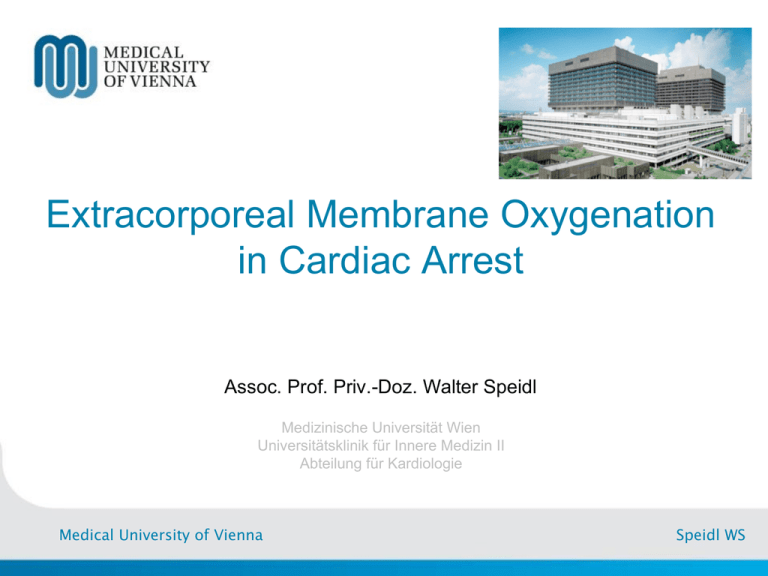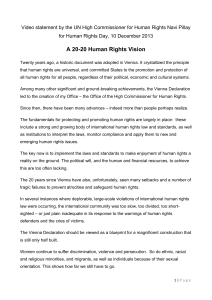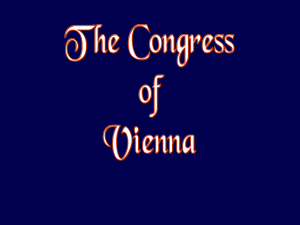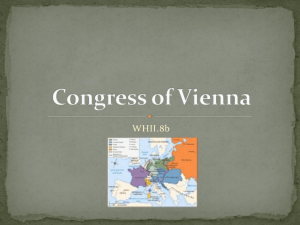Extracorporeal membrane oxygenation in cardiac arrest.
advertisement

Extracorporeal Membrane Oxygenation in Cardiac Arrest Assoc. Prof. Priv.-Doz. Walter Speidl Medizinische Universität Wien Universitätsklinik für Innere Medizin II Abteilung für Kardiologie Medical University of Vienna Speidl WS Medical University of Vienna Speidl WS Overview • Introduction • Outcomes • Prognostic factors • Cannulation • Post-resuscitation care • Complications Medical University of Vienna Speidl WS Publications Pubmed: extracorporeal and CPR Medical University of Vienna Speidl WS Definition ECPR: Extracorporeal cardiopulmonary resuscitation ECLS: Extracorporeal live support The rapid deployment of extracorporeal membrane oxygenation (ECMO) to provide immediate cardiovascular support for patients who have cardiac arrest unresponsive to conventional CPR measures. Morris MC, Crit Care Med. 2004 Apr;32(4):1061-9. Medical University of Vienna Speidl WS Veno-Arterial ECMO V-A ECMO Oxygenator FiO2 40-60% Femoral access cannulas 15-21F Pump flow 3-4 l/min Medical University of Vienna Speidl WS ECLS in-hospital and out-of-hospital Image courtesy of Lamhaut L. Medical University of Vienna Speidl WS Guidelines K.G. Monsieurs et al. / Resuscitation 95 (2015) 1–80 Medical University of Vienna Speidl WS Guidelines Brooks SC, Circulation. 2015 Nov 3;132(18 Suppl 2):S436-43 Medical University of Vienna Speidl WS Outcomes Meta-analysis • 8 observational studies after 2000 • 343 patients with cardiac arrest • Survival to discharge 35.9% Xie A, J Cardiothorac Vasc Anesth. 2015 Jun;29(3) 637-45 Medical University of Vienna Speidl WS Outcomes Vienna 1993-2010 • • • • • 3621 patients with cardiac arrest at the ED 55 patients treated with ECPR (2%) 60 % out-of-hospital cardiac arrest Time till start of canulation 52 min Cannulation time 33 min Medical University of Vienna Wallmüller C, Resuscitation. 2013 Mar;84(3):326-30 Speidl WS Outcomes Vienna 1993-2010 • • • • • • Cardiac Hypothermic Pulmonary Intoxication Diabetic coma Total 19 14 11 8 3 55 • Weaning from ECMO • 6 month survival • CPC-Score 1 or 2 Medical University of Vienna (35%) (25%) (20%) (15%) (5%) 14 (25%) 8 (15%) 8 (15%) Wallmüller C, Resuscitation. 2013 Mar;84(3):326-30 Speidl WS Outcomes In-hospital cardiac arrest • 3-year prospective observational study • ECMO for 59 patients • Age 18–75 years • Witnessed in-hospital cardiac arrest of cardiac origin • Undergoing CPR for >10 minutes • Propensity-score matched with conventional CPR Chen YS, Lancet. 2008 Aug 16;372(9638):554-61 Medical University of Vienna Speidl WS Outcomes In-hospital cardiac arrest p=0.003 ECPR conventional CPR Chen YS, Lancet. 2008 Aug 16;372(9638):554-61 Medical University of Vienna Speidl WS Outcomes In-hospital cardiac arrest ECPR CCPR • Weaning from ECMO 49% • Survival to discharge 29% 12% • CPC 1 or 2 at discharge 11% 24% • CPC 1 or 2 at one year 9% 15% Chen YS, Lancet. 2008 Aug 16;372(9638):554-61 Medical University of Vienna Speidl WS Outcomes Cardiac origin • 7-year retrospective study • ECMO for 86 patients • Age 18–74 years • Cardiac arrest of cardiac origin, 49% out-of-hospital • VF on ECG during CPR • Undergoing ALS for >20 minutes Kagawa E, Circulation. 2012 Sep 25;126(13):1605-13 Medical University of Vienna Speidl WS Outcomes Cardiac origin • Weaning from ECMO 50% • 30-days survival • CPC 1 or 2 at discharge 29% 24% • Survivors 28% out-of-hospital cardiac arrest • Non-survivors 57% out-of-hospital cardiac arrest Kagawa E, Circulation. 2012 Sep 25;126(13):1605-13 Medical University of Vienna Speidl WS Outcomes Out-of-hospital cardiac arrest • 3 year prospective study • 26 hospitals ECPR 20 hospitals non-ECPR • VF/VT initial ECG, 20-70 years • Hospital arrivial within 45min after EMS call Sakamoto T, Resuscitation. 2014 Jun;85(6):762-8. Medical University of Vienna Speidl WS Outcomes Out-of-hospital cardiac arrest ECPR Number of patients non-ECPR 260 Time from EMS call to arrival 29min CPC 1 or 2 at 6 months 12.4% 194 30min 3.1% Sakamoto T, Resuscitation. 2014 Jun;85(6):762-8. Medical University of Vienna Speidl WS Outcomes CHEER trial • Prospective study • Age 18-65 years • Cardiac arrest of cardiac origin • Initial rhythm ventricular fibrillation • CPR > 30min • 26 patients, 11 OHCA, 15 IHCA Stub D, Resuscitation. 2015 Jan;86:88-94 Medical University of Vienna Speidl WS Outcomes CHEER trial • Mechanical chest compression (Autopulse®) • 2 liter ice-cold saline • Transfer to the ED, immediate ECMO • Cardiac arrest to ECMO 56min (40-85min) • Arrival to ECMO flow 20min (15-30min) • Weaning from ECMO 54% • Hospital discharge 54%(IHCA 60%,OHCA 45%) • CPC 1 of survivors: 100% Medical University of Vienna Stub D, Resuscitation. 2015 Jan;86:88-94 Speidl WS Patient selection Accidential Hypothermia ECPR associated with 6.6-fold survival Intoxication Beta-blockers Case reports with Calcium-antagonists good outcome Antiarrhytmics Tricyclic antidepressants Benzodiazepines Medical University of Vienna Speidl WS Prognostic factors No flow time 51 consecutive patiens witnessed OHCA, 2 survivors Causes of death afer ECPR • Multi organ failure 47% • Brain death 20% • Hemorrhagic shock 14% Le Guen M, Crit Care. 2011;15(1) Medical University of Vienna Speidl WS Prognostic factors Time until ECMO-flow Chen YS, Lancet. 2008 Aug 16;372(9638):554-61 Medical University of Vienna Speidl WS Prognostic factors Time of CPR Kim SJ, Crit Care. 2014 Sep 26;18(5):535 Medical University of Vienna Speidl WS Prognostic factors Serum lactate 117 patients: multivariate analysis only serum lactate Jung C, Clin Res Cardiol. 2015 Aug 25. Medical University of Vienna Speidl WS Prognostic factors • No flow time • VF/VT at initial ECG • Cardiac origin • Signs of live movement, respiration, pupillary response • Time to ECMO flow no differences IHCA/OHCA when adjusted for time • ETCO2>10 mmHg • Lactate levels Medical University of Vienna Speidl WS Cannulation • Surgeon • Emergency physician • Cardiologist • Intensivist Percutaneus Open Mixed Arterial 15-19F Venous 19-21F Medical University of Vienna Speidl WS Cannulation Technique Percutaneus • Seldinger technique • Ultrasound or fluoroscopy to locate wire in V. cava inf. and Ao. desc. • Risk of failure • Distal limb perfusion catheter Medical University of Vienna Speidl WS Cannulation Technique Open • Needs a Surgeon • Time consuming • Not for out of hospital ECMO • Lowest risk of failure Medical University of Vienna Speidl WS Cannulation Technique Mixed • Incision in the groin • Insertion of guidewire, dilator and cannula under vision with Seldinger • Increased bleeding • Best for out-of-hospital ECMO Medical University of Vienna Speidl WS Post-resuscitation care • MAP 60-70 mmHg • Normoxia, normocapnia • Ice-cold saline for volume loading and mild hypothermia • Immediate coronary angiography or CT scan for pulmonary embolism Medical University of Vienna Speidl WS Post-resuscitation care no flow – pulmonary oedema 24 hours after ECMO Medical University of Vienna Speidl WS Post-resuscitation care no flow – watershed phenomenon No contrast in coronaries and Ao. ascendens Medical University of Vienna Hoeper MM, Circulation. 2014 Sep 2;130(10):864-5 Speidl WS Post-resuscitation care no flow – myocardial ischemia • Decrease afterload as much as possible low ECMO flow MAP 60-70 mmHg • Use inotropic agents dobutamine, levosimendan • Increase FiO2 and PEEP at respirator Medical University of Vienna Speidl WS Post-resuscitation care no flow – pulmonary oedema 4 days after ECMO Medical University of Vienna Speidl WS Post-resuscitation care no flow – pulmonary oedema IABP Medical University of Vienna Impella LV-vent Speidl WS Complications Acute setting • Wrong cannulation venous-venous or arterial-arterial • Bleeding • Accidental decannulation • „Harlequin” syndrome Medical University of Vienna Zangrillo A, Crit Care Resusc. 2013 Sep;15(3):172-8. Speidl WS Complications in the ICU • renal failure requiring haemofiltration 52% • bacterial pneumonia 33% • any bleeding 33% • sepsis 26% • haemolysis 18% • central nervous system complications 15% • liver dysfunction 16% • leg ischaemia 10% • venous thrombosis 10% • gastrointestinal bleeding 7% • aspiration pneumonia Zangrillo A, Crit Care Resusc. 2013 Sep;15(3):172-8. 5%University of Vienna Medical Speidl WS • disseminated intravascular coagulation 5% Patient selection Load & Go Criteria Vienna • Age < 75 years • Witnessed OHCA • Basic life support • Ventricular fibrillation/ventricular tachycardia • No ROSC within 15 min of advanced-life-support Poppe M, Resuscitation 91 (2015) 131–136 Medical University of Vienna Speidl WS Patient selection Load & Go Criteria Vienna Population 1.8 Million VICAR Study: August 1, 2013 to July 31, 2014 Medical University of Vienna Poppe M, Resuscitation 91 (2015) 131–136 Speidl WS Summary • Only small non-randomized studies • Survival in ECPR ranges from 4% to 54% • Decision for ECMO after 15-20 min • ECMO should start within 60 min • Need for efficient ECMO rescue teams for IHCA and OHCA Medical University of Vienna Speidl WS Thank you! walter.speidl@meduniwien.ac.at Medical University of Vienna Speidl WS






